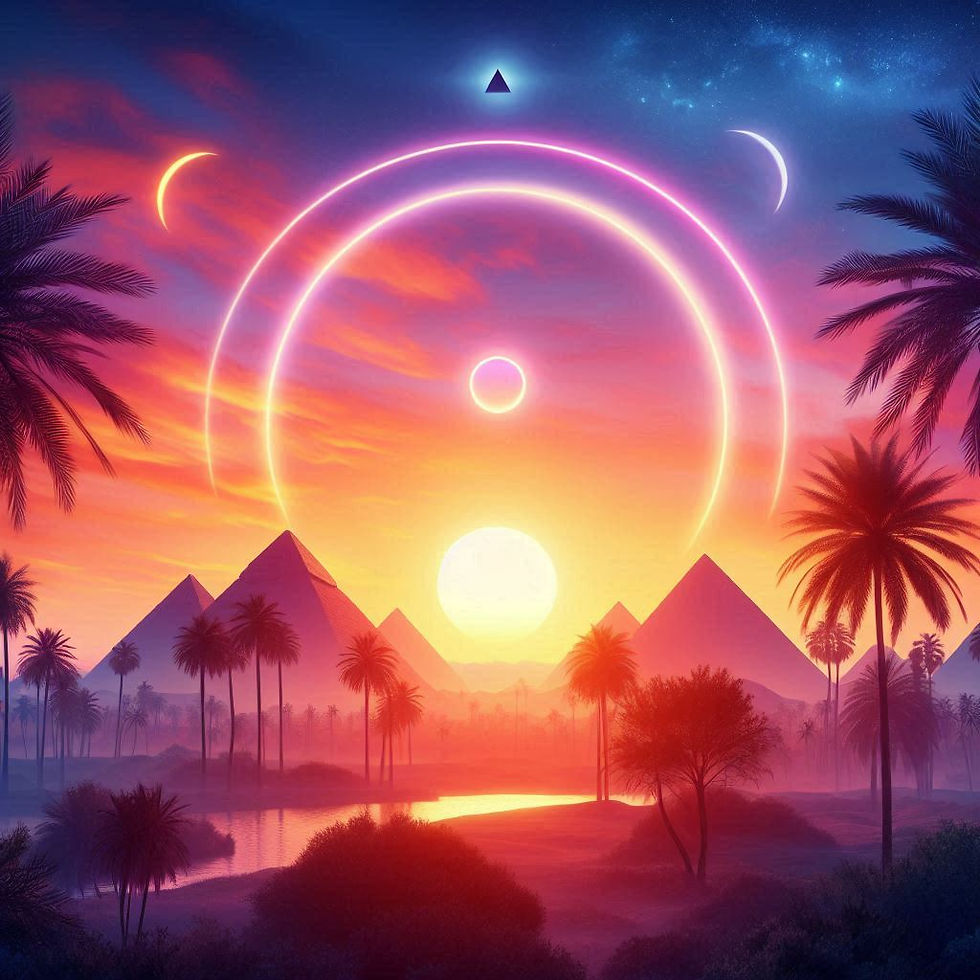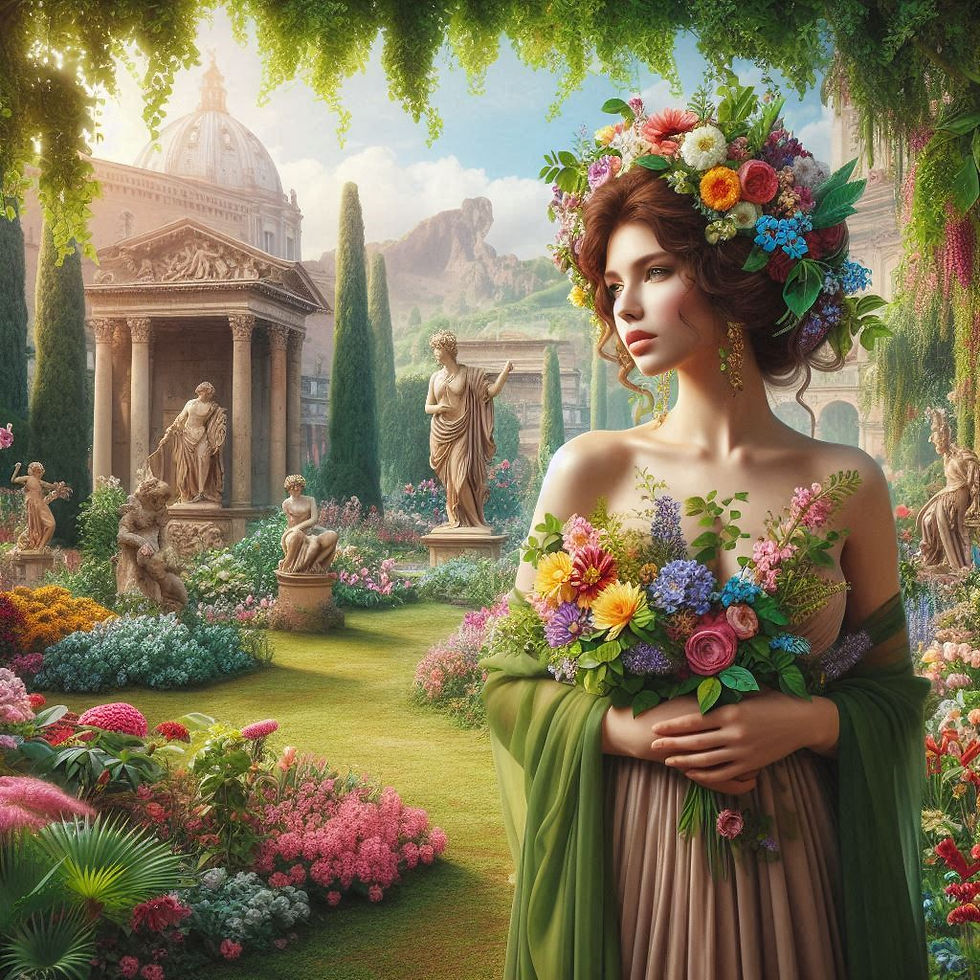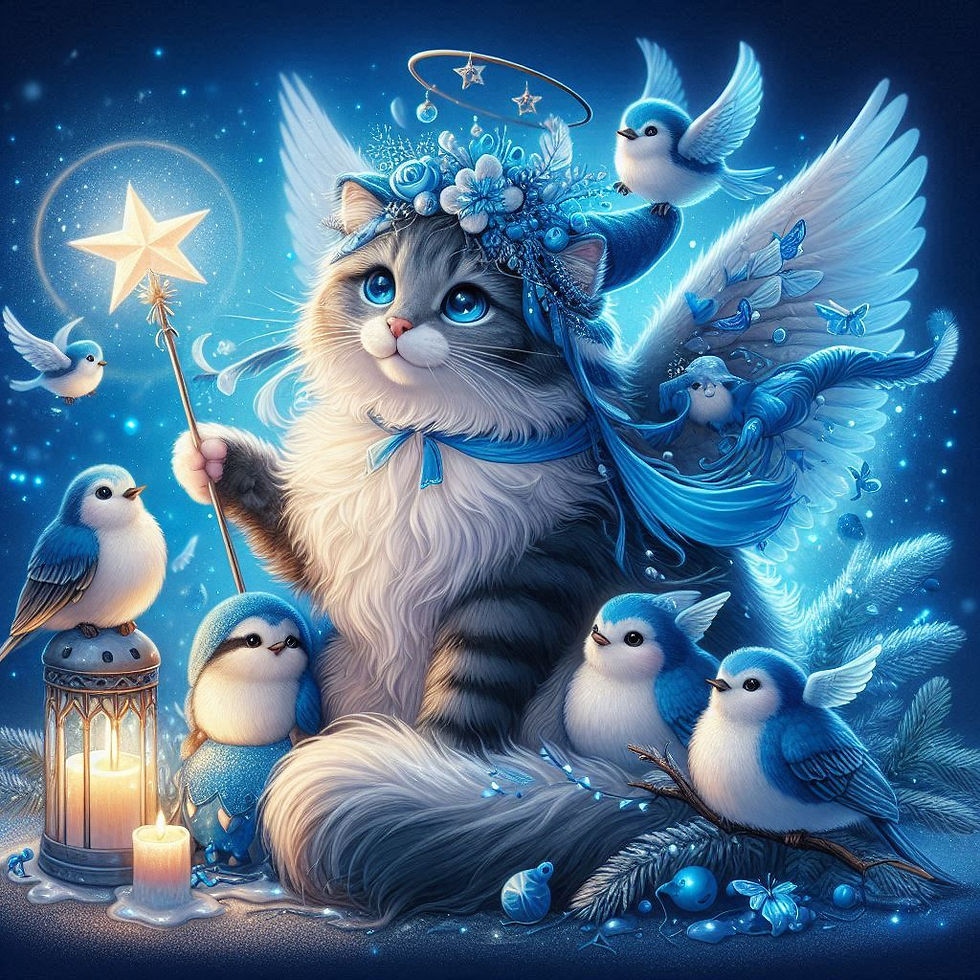The Spring Equinox:A Celebration of Renewal Through Time
- Julia Heisler
- Mar 23
- 3 min read
Author : Corinne RICHARD
Website : https://www.frenchmysticgateway.com

Since the dawn of time, the spring equinox has been a key moment in the cycle of
nature.
It marks the perfect balance between day and night, heralding the return of light and
fertility.
Many civilizations, religions, and esoteric traditions have celebrated this sacred
transition through rituals, festivities, and symbolic practices.

Throughout history, this period of renewal has been honored in connection with
deities associated with fertility, resurrection, and light.

In ancient Egypt, Osiris, the god of resurrection and fertility, was closely linked to the
cycle of nature and the return of life after death. The equinox symbolized the rebirth
of the earth, just as Osiris himself was reborn after his assassination.
In ancient Greece, Persephone, the daughter of Demeter, returned from the
Underworld in spring after spending the winter with Hades. Her return marked the
rebirth of nature and the beginning of spring. Her mother, Demeter, the goddess of
agriculture and harvests, rejoiced so much at her return that the earth flourished once
again, signaling the end of winter.
In Rome, Flora, the goddess of flowers and plant renewal, was honored during the
Floralia festival in late April, celebrating the full bloom of nature.

The Romans also worshiped Attis, a god who died and was resurrected, with equinox
rites associated with renewal and fertility.
Among Nordic peoples, Ostara, the Germanic goddess of spring and fertility, was
celebrated as the one who awakened the slumbering earth. The modern pagan
festival of Ostara derives from her name. Freya, the Norse goddess of love and
fertility, was also invoked to bless the land and ensure a fruitful harvest.
In Mesopotamia, Inanna (known as Ishtar to the Babylonians), the goddess of fertility
and renewal, embodied the cycle of death and rebirth. Her myth tells of her descent
into the Underworld and her triumphant return, symbolizing nature’s awakening after
winter.
Across the world, the Mayans and Aztecs observed the equinox with great attention.
At Chichén Itzá, an interplay of light and shadow created the illusion of a serpent
slithering down the pyramid’s steps ; an astronomical event honoring Kukulkan
(Quetzalcoatl among the Aztecs), the feathered serpent god of wind and light. This
phenomenon marked the beginning of the agricultural season.
In India, Krishna was associated with the festival of Holi, celebrated around the
equinox. This vibrant festival symbolizes the victory of spring over winter, good over
evil, and joy over darkness. Durga, the great mother goddess, was honored during
Chaitra Navratri, a spring festival marking the return of vital forces in nature.
Traditions That Live On
Even today, the spring equinox continues to be celebrated around the world in
various ways.
In Wiccan and pagan traditions, Ostara is a festival dedicated to the goddess of
fertility and renewal.
This moment symbolizes the Earth’s awakening after winter. Practitioners decorate
eggs, symbols of life, and perform gratitude rituals for nature’s rebirth.

In Persian and Central Asian cultures, Nowruz, the Persian New Year, marks renewal
and prosperity. Celebrated for over 3,000 years, families honor the event by
preparing the Haft-Seen table, decorated with symbolic elements such as sprouted
grains (growth), vinegar (wisdom), and coins (prosperity).
Among the Celts, the spring equinox symbolized the transition between shadow and
light. Rituals honored Mother Earth, with offerings of flowers and seeds, ritual fires to
encourage soil fertility, and celebrations to mark this period of transformation.
In Hinduism, Holi, also known as the festival of colors, remains one of the most
vibrant equinox celebrations. It is a time of purification, where participants throw
colored powders, sing, and dance to rejoice in life and the renewal of energy.

Christian Easter, though its date varies, is deeply linked to the cycle of spring. The
resurrection of Christ symbolizes the triumph of light over darkness and spiritual
renewal. Traditions such as Easter eggs and church bells ringing find their roots in
ancient rites associated with fertility and the return of life.
In Japan, Shunbun no Hi is a day dedicated to balance and harmony with nature.
Families visit the graves of their ancestors and enjoy the cherry blossoms, which
symbolize the fleeting beauty of life.
Finally, in modern esoteric practices, the spring equinox is often seen as a time for
purification and rebirth. Some people cleanse their space and energy, meditate on
their intentions for the new season, or light candles to honor the return of the sun and
prosperity.
The arrival of spring has always been celebrated as a time of renewal, fertility, and
light. Whether through ancient rituals or modern practices, this moment continues to
symbolize the rebirth of both nature and the soul, reminding us of life’s eternal cycle.
French Mystic Gateway




🤩❤️❤️❤️